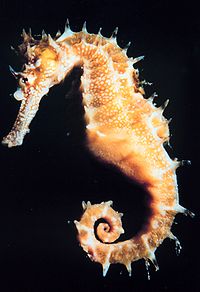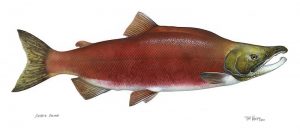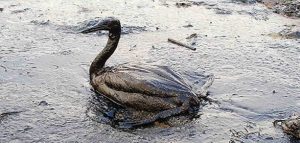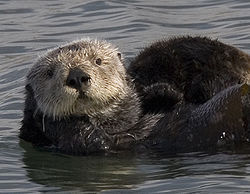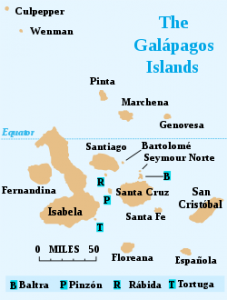Category Archives: Environmental
Dorset Breeding Colony Overjoyed by First Seahorse Baby
Many people are happy, and patting themselves on the back after finding the first baby sea horse at one of the leading breeding colonies in Dorset.
The tiny fry, what you call a tiny baby seahorse, discovered at Studland Bay is 4 centimeters in length.
The Seahorse Trust has claimed that the seahorses are an endangered animal, as many boats and mooring chains are taking big hunks and tearing up the seabed.
The Marine Management Organization, a government entity, has said that although research has been ongoing into the subject, there was no conclusive evidence that mooring chains are a threat to seahorses.
The Seahorse Trust is pushing for the protection of these amazing animals under the Wildlife and Countryside Act, which came into existence in 2008.
“The trust and its volunteer divers have seen adults, pregnant males and juveniles on the site before but never a baby (fry),” a representative of the Seahorse Trust has commented.
“It does not mean they are thriving, quite the reverse, they appear to be hanging on in there against the odds of hundreds of boats dropping anchors and mooring chains ripping up the seabed, destroying their fragile home.”
The main goal of the Seahorse Trust is to get those nasty moorings replaced with more environmentally sound ones which do not damage seagrass, and for boat users to switch to these new devices.
Hopefully the discovery of this new baby seahorse will prompt some more interest in the issue, and something will be done to help protect these magnificent sea creatures.
Sea Urchins Put To Test in Cleaning Up Algae
The coral reefs off of Hawaii are being smothered by tons of algae, and efforts have been made to help solve this dilemma. The answer comes from an unlikely source.. Sea Urchins. Sea urchins, commonly known as the “cows of the sea”, are being used along side a new underwater vacuuming system aptly named the “Super Sucker” in an attempt to finally start getting the algae off the reef and get them healthy again.
Researchers from the state Department of Land and Natural Resources Division of Aquatic Resources are pleased to announce that the project has been a success, as it has been using sea urchins alongside the Super Sucker for the past year in Kaneohe Bay.
“It exceeded our exectations,” Tony Montgomery, a state aquatic biologist commented. “It actually worked better than we thought.”
The project began in August of last year, where divers were manually removing the offending algae from the reef. Once harvested, the algae was then sucked up using the super sucker.. On another part of the reef however, a bunch of sea urchins were left to do their business. The results were that these cows of the sea were quite the eating machines. While the project is being deemed a success there is still a lot of algae to be removed, and Montgomery is remaining casually optimistic. “We will see how they do with thousands of pounds of algae to eat,” He said.
Fraser sockeye count climbs to 30 million
The Fraser River is being overrun by sockeye salmon.
Officials from the fishery are now estimating that the number of sockeye returning has climbed to roughly 30 million, which is a 5 million increase from their previous count of 25 million earlier this week.
This is the highest number of returning salmon recorded since 1913, when around 39 million sockeye made their way back to the Fraser River, just before a rock slide into the river gave birth to Hells Gate and caused a huge disruption in the stocks of salmon for decades.
The run this year is looking to be almost three times higher than the 11 million originally estimated before the season started.
The late run this year is projected to be large as well, due to the fact that it will include the peak cycle Adam River run.
However, this run has really turned a lot of heads, as the Pacific Salmon Commission this past Friday has raised its estimate of late run sockeye to an astounding 21.4 million, which is a far cry from their 8.5 million prediction prior to the start of the season.
Up till now, more than 6.4 million salmon have swum their way upriver, avoiding the gilnetters on the lower Fraiser, as compared to the 5.7 million which were estimated as having being caught.
And there doesn’t seem to be any sign of a shortage.
It’s good to see mother nature replenishing her stocks, after such a long “dry spell”. Hopefully this is just a taste, and the salmon runs will continue to be as plentiful in the years to come.
Trawlermen from Shetland Illegally Reeled in 15M GPB Worth of Herring and Mackeral
Six skippers are facing unlimited fines and confiscation orders to the tune of millions of pounds after admitting they breached fishing quotas.
Six trawlermen from Shetland are facing the music for reeling in an astounding 15 million GPB worth of herring and mackerel, cheating the strict quotas in place which are designed to help depletion of fish stocks.
The six skippers, hailing from Lerwick, admitted to making false declarations about the true hauls they brought in after over 200 trips between January 2002 and March 2005, which deliberately breached annual fishing quotas of their own.
The conviction came down, after an exhaustive investigation by the Scottish fisheries protection agency and police which also led to guilty pleas from the fish wholesalers Shetland Catch Ltd. For cooking their fish books, and falsifying reports about the size of their catches.
This particular case is one of the biggest on record involving what are known as “black landings”. Black landings is the practice of illegally catching and reeling more fish than what quotas allow for.
Black landings have all but died out, however director of operations with Scotland’s prosecution authority, Scott Pattison, has commented that there were also similar investigations still ongoing.
“This is not a victimless crime. The consequences of overfishing on this scale are far-reaching and the impact on fish stocks and the marine environment is potentially devastating,” he said. “The legislation is to protect the marine environment for the good of all and to safeguard the fishing industry.” he said.
Scientists Hot on the Trail of Huge, Underwater Oil Plume In Gulf Of Mexico
Researchers backed by the NSF (National Science Foundation) and in conjunction with the WHOI (Woods Hole Oceanographic Institution) have discovered a plume of hydrocarbons which is more than 3,000 feet below the surface of the Gulf of Mexico and is thought to be 22 miles long at minimum. This plume is the residue of the BP Deepwater Horizon Oil Spill.
The 650 foot high, and 1.2 mile wide, plume of trapped hydrocarbons was discovered in the midst of a ten day subsurface sampling effort which took place from the 19th of June, until the 28th of June this year near the wellhead. The results have given a clear indication of where the oil has gone as the slicks on the surface have been shrinking and disappearing.
“These results create a clearer picture of where the oil is in the Gulf,” commented Christopher Reddy, a WHOI marine geochemist and one of the authors of a paper on the results that appears in this week’s issue of the journal Science.
This investigation – which was made possible by three quick action grants from the chemical and oceanography program at the NSF, with additional money made available by the US Coast Guard and NOAA via the Resource Damage Assessment Program – has confirmed that a large flowing plume was discovered which had
“petroleum hydrocarbon levels that are noteworthy and detectable,” Reddy explained.
So it seems we have not yet seen the end of the dreadful BP Oil Spill. While there has been no talk about what to do about this potentially disastrous situation, they are hard at work on it, but it could be months before an answer is found.
Hawaiian Coral Can be Safely Thawed in 1,000 Years!
Researchers from the Hawaii Institute of Marine Biology at the University and the Smithsonian have brought the first frozen Hawaiian coral bank into existence to try and prevent them from becoming extinct and to preserve their diverse population in Hawaii.
A faculty member over at the HIMB, and also a respected scientist with the Smithsonian Conservation Biology Institute, Mary Hagedorn, is leading the lab at the HIMB research facilities on Coconut Island in Kaneohe Bay, Oahu, which is storing the frozen cells of the coral.
“Because frozen banked cells are viable, the frozen material can be thawed one, 50 or, in theory, even 1,000 years from now to restore a species or population,” explains Hagedorn. “In fact, some of the frozen sperm samples have already been thawed and used to fertilize coral eggs to produce developing coral larvae.”
Many people tend to forget that Coral reefs are living, dynamic ecosystems which afford precious services: They are the home to many offspring for marine animals and other invertebrates; they give natural protection from storms on the coasts; they take carbon dioxide out of our atmosphere; and they even might be sources for future medical wonders.
So, is it any wonder that it would be a good idea to keep them alive? By freezing them, we are saving them, and can keep them alive for up to 1,000 years. Think of all the wonderful things will be accomplished, by simply saving the coral.. Imagine if we had the same initiative when it came to everything?
Madagascar Alarmed at Self-Cloning Crayfish Invasion
An invading rare kind of self-cloning crayfish has been discovered in Madagascar, and is causing all sorts of alarm among researchers. Scientists are afraid that if these self-cloning crayfish continue to expand their territory that it could have sever consequences on the local environment. Madagascar is the home of numerous plants and animals, and is very delicately balanced. These invading crayfish may cause quite a disturbance.
The fear is escalating on Madagascar, an island located on the Indian ocean, as this self-cloning crayfish are invading and are eating their fair share of the rice paddies, and are an imminent threat to the endemic crayfish species.
It is not quite clear just how, or when, these shrimp like crustaceans, which are believed to have come from North America, came to Madagascar, which is some 400 miles off the coast of Mozambique.
Researchers think that the crayfish may have made its way from Europe, where scientists from Germany warned that crayfish were becoming very prolific as aquarium fish back in 2003.
A biologist at the Universite d’Antananarivo, professor Olga Ramilijaona, has explained that the first of these crayfish were found in a rice paddy close to the Capital in 2003.
However, the first “invasion” of the species, known as Marmorkrebs or Procambarus due to the fact that they appear to be closely related to North American crayfish in the genus Procambarus, particularly Procambarus fallax, came in the rainy season of 2007, when the crayfish, which were sold to less fortunate locals as a source of protein in the diet, began being sold in the markets.
Looks like there will be plenty enough to go around on the menu, if something isn’t done about this soon.. Scientists still don’t have a plan of action, but they are working on it.
80% Of Oil From the Gulf Of Mexico Spill Is Still Lurking About: “The Oil Is Still Out There”

The report was written by five accomplished marine researchers, and strongly goes against the reports issued by the media, which state that only 25% of the oil from the BP spill is still out there.
“One major misconception is that oil that has dissolved into water is gone and, therefore, harmless,” director of Georgia Sea Grant and professor of marine sciences in the University of Georgia Franklin College of Arts and Sciences, Charles Hopkinson explains. “The oil is still out there, and it will likely take years to completely degrade. We are still far from a complete understanding of what its impacts are.”
The report was written in conjunction with Jay Brandes, the associate professor of the Skidaway Institute of Oceanography; Samantha Joye, a professor of marine sciences at the UGA; Richard Lee, professor emeritus at Skidaway; and Ming-yi Sun, a professor of marine sciences at the UGA.
This group of researchers have take a look at the data taken from the Aug 2nd National Incident Command Report, which estimated an “oil budget” which was widely interpreted as suggesting hat only 25% of the oil from the catastrophic spill remained in the waters.
Sea Otter Numbers Are Down in California Survey Says
After 10 years of a steady recovery, the southern sea otter – a species on the federal list as being threatened – populations are declining for the second year running, so says a population survey conducted by researchers with the U.S. Geological Survey.
“We have seen a decrease in sea otter numbers throughout most of their range, particularly in those areas where most of their reproduction occurs, while pup counts have dropped to 2003 levels,” explains the head researcher for the yearly survey, Tim Tinker of the USGS Western Ecological Research Center. “A number of human and natural factors may be influencing this trend, and we are working to better understand what those are.”
The estimates of the population are calculated as three year averages of the yearly results of the surveys, which make allowances for variables which arise during different times of observation and give researchers a better picture of the trends in abundance. The estimate this year – averaging out the results from surveys from 2008, 2009 and 2010 – is a mere 2,711 otters. This signifies a 3.6 percent drop in the population overall, and an 11 percent drop in the number of otter offspring, compared to the estimates of 2009.
“Remember, sea otter health can tell us a lot about the health of the coastal waters that humans also enjoy,” Tinker reiterates. “So, we’re eager to learn more.”
Well, if that’s an indication.. Our world might just be in a heap of trouble.. Let’s hope they get to the bottom of it quickly.
Costa Rican Boat Caught With Hand in Cookie Jar: Illegally Fishing in the Galapagos
The navy in Ecuador took charge of a fishing boat, of Costa Rican origin dubbed the Rosa I, which had a bountiful cargo of shark meat. This boat was seized in the Galapagos Islands, and an investigation is underway to determine whether the shark came from the archipelago, where shark fishing has been outlawed.
The vessel was halted just shy of 104 nautical miles northwest of Darwin Island with over 70 pieces of shark meat in its hold, Ecuavisa television reported.
This Costa Rican fishing boat had five crewman and a dog on board.
The investigators, from the Ecuadorian Navy, are still trying to determine if in fact the sharks were caught inside or outside a protected marine reserve.
It is a fact that the sharks were reeled in in international waters, however the fishing boat was forced to enter the Galapagos due to some emergency aboard, the captain of the vessel, Wainer Bonilla, explained to Ecuavisa.
“We entered Ecuadorian waters because we were having problems with the main engine,” Bonilla commented.
The crew on the Rosa I scratch out a living by fishing for sharks, which is perfectly acceptable in Costa Rica, Bonilla explained, adding that each portion of the shark meat nets them a cool $60 to $70 in the country.
This is the fourth such fishing boat which has been stopped in the Galapagos this year for illegal fishing.. It doesn’t look good does it?
Nor does it look good, that Costa Rican waters were over fished over the past few years… But only time will tell if the Rosa I and her crew were guilty of any crime.
